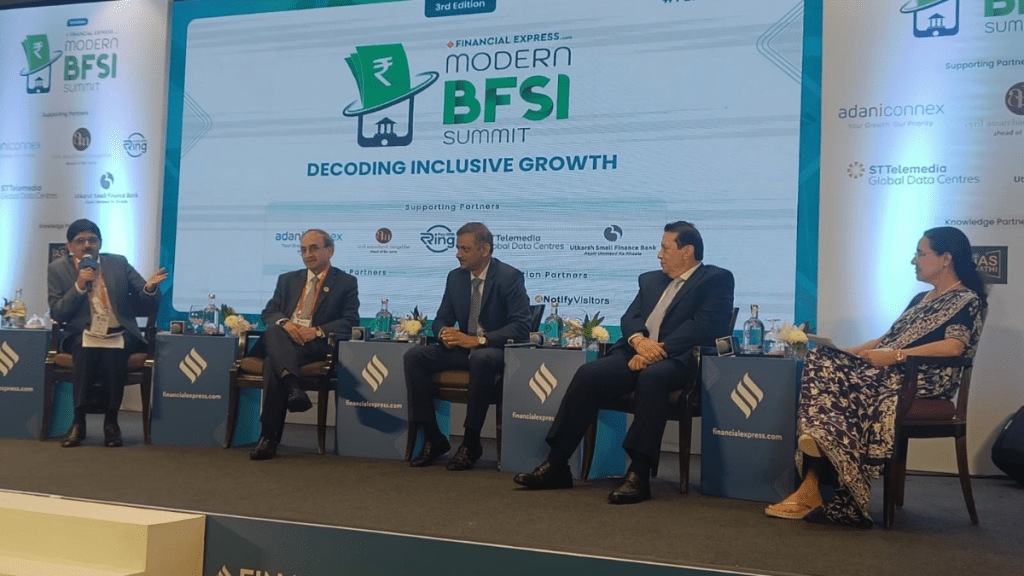Bankers have expressed confidence that the slowdown in deposit mobilisation is a temporary phase and things will improve soon.
Speaking at the FE Modern BFSI Summit on Friday, State Bank of India (SBI) chairman Dinesh Khara said: “We are very mindful of ensuring that the ability to continue to grow deposits must be there. All our branches have been clearly told that deposits should continue to be the major focus of growth.”
Khara added that the bank would hike interest rates, if needed, to mobilise deposits.
Keki Mistry, non-executive director, HDFC Bank, said higher food prices and hike in interest rates have caused moderation in the savings capacity of the lower and middle income groups, which is one of the reasons for bank deposit coming down. “However, this is just one phase, and deposit growth will likely revive going ahead,” Mistry added.
V Vaidyanathan, managing director and CEO of IDFC First Bank, said that while capital is moving to stock markets, the money continues to be with the banking system.
“Remember for the investor, there is a seller who is putting money back into the banking system. If you invest in mutual fund, that money is going to some company and so on and so forth. It is not that money is leaving the banking system. It is only the nature of money changing from retail to corporate deposits,” he said.
The bankers’ comments come at a time when bank credit is growing at the pace of 14%, while deposit growth is slower at 11%. This has led to an elevated incremental credit-deposit (CD) ratio of 101%, according to the Reserve Bank of India’s (RBI) latest monthly bulletin.
Speaking about the new areas in credit deployment, Zarin Daruwala, CEO, Standard Chartered Bank India, said industries which are infra-linked, like steel and cement, are seeing good capex. In real estate, 35 million square feet were added in H1 this year, in terms of just residential segment – clearly leading to a significant amount of employment. “The whole electric vehicle ecosystem, battery storage, manufacturing – all the new-age manufacturing sectors will see serious opex, which will boost jobs,” Daruwala said.
Khara agreed. “Going ahead, renewable energy will be a key growth driver for the bank, and logistics, small and medium enterprises (SME) sectors, too, will show higher credit demand.”
“When we see the next 6-7 years till 2030, a large number of new sectors will come up and our banking systems’ ability to be inclusive will be very critical,” Vaidyanathan said. The gig economy workers are a good sector where one can extend credit, he added.
On the upcoming Budget, Mistry said the government must focus on maintaining the momentum of GDP growth, encourage growth of employment generating sectors like housing and infrastructure, explore ways to increase consumption, and take measures to boost the rural economy. A thrust on the manufacturing sector and having fiscal discipline are other expectations from the upcoming Budget, he added.
Daruwala said the Centre will likely focus on infrastructure sector growth in the Budget, while also refining PLI for the job-creating sectors.
